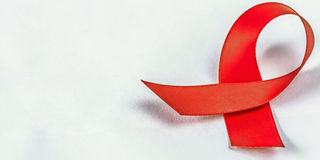New figures show extent of HIV infection in Kenya

Currently, there are 53,067 mothers in Kenya on ART to prevent mother-to-child transmission (PMTCT) . PHOTO| FILE
There are 1,493,382 Kenyans living with HIV. This is according to the latest 2018 HIV estimates seen by Healthy Nation.
New infections now stand at 52,767, half of the 100,000 new infections recorded in 2014. Five counties had less than 100 new infections in the past year: Wajir County (6), Mandera (19), Garissa (55), Samburu (73), and Tana River (93).
Five counties account for half of all the new infections in adults. They are Nairobi (7,159), Homa Bay (4,558), Siaya (4,039), Kisumu (4,012) and Migori (2,814).
These counties also recorded the highest number of deaths from HIV-related illnesses despite having a high concentration of awareness programmes. They also have the highest number of patients on anti-retroviral (ART) drugs.
Nairobi leads with 140,000 patients on ART, Kisumu (101,527), Homa Bay, (100,667), Siaya (80,000) and Migori (65,820). For children, Homa Bay County has the highest number of children on ART with 9,655, followed by Kisumu (8,225), Nairobi (7,611), Siaya (7,462) and Migori (6, 175).
There are 184,719 HIV-positive youth (15-24 years) and this age group accounts for 17,667 of the total new infections, and 2,830 HIV-related deaths.
Fewer deaths indicate that more youth are getting tested, treated and retained on antiretroviral therapy.
Initiation and retention on ART is vital to achieving viral suppression (reduced viral load that is undetectable and can therefore not be transmitted) among HIV-infected patients.
Currently, nearly one million Kenyans are on ART, including 53,067 mothers on ART to prevent mother-to-child transmission (PMTCT) or 76 per cent coverage.
DROP IN PREVALENCE
The overall prevalence of HIV has dropped to 4.8 per cent, with a prevalence of 5.2 per cent among women, and 4.5 per cent in men. The number of HIV-related deaths are nearly half the number of new infections at 28,214 deaths. According to Dr Dismas Oketch of the Kenya Medical Research Institute, this can be attributed to patients who seek treatment late and lack of adherence to treatment.
“The number of defaulters is becoming a concern. That’s why new infections are decreasing, but HIV-related deaths continue to rise,” explained Dr Oketch, adding that this could also be explained by treatment failure or infection with drug-resistant strains. Moreover, HIV-related deaths are not always accurately estimated because a HIV-positive person can die of other infections, but be deemed to have died of HIV-related causes, by virtue of their HIV status.
Newer strategies like pre-exposure prophylaxis (PrEP) initiatives have also helped the fight against the virus.
More than 53, 291 Kenyans are receiving PrEP, and Kenya expects to have half a million people on PrEP by 2022. Other HIV control measures such as condom distribution, voluntary male circumcision of 233, 879 men, HIV education and awareness, safe sex messages and distribution of 189,000 needle and syringes to drug users have also helped.
***
HIV infects one teen girl every 3 minutes
Every three minutes, a girl between the ages of 15 and 19 is infected with the virus that causes AIDS.
Girls and young women made up two-thirds of 15- to 19-year-olds infected with HIV in 2017, new Unicef data has shown. Last year, 130,000 youngsters aged 19 and under died from AIDS, while 430,000 were newly infected.
While AIDS-related deaths have decreased since 2010 in all other age groups, among older adolescents aged 15 to 19 they have remained stubbornly constant. About 1.2 million 15- to 19-year-olds were living HIV in 2017, three in five of them girls.
“The epidemic’s spread among adolescent girls is being fuelled by early sex, including with older males, forced sex, powerlessness in negotiating about sex, poverty, and lack of access to confidential counselling and testing services,” the Unicef report pointed out.
“Young people have forgotten that HIV is a risk factor... we can’t let up on that message, otherwise it just blows up again,” said International AIDS Society president Linda-Gail Bekker. - AFP



